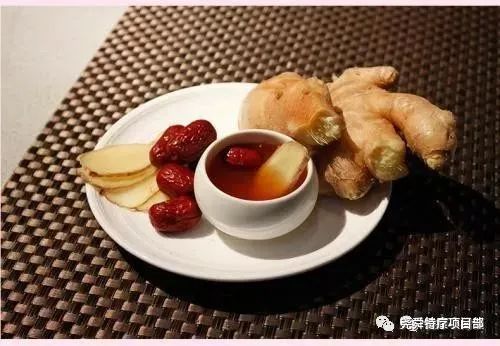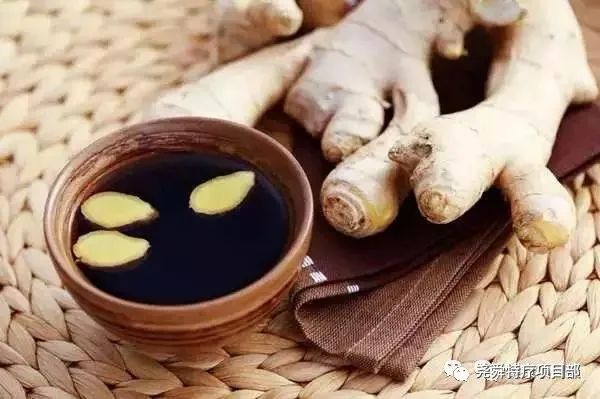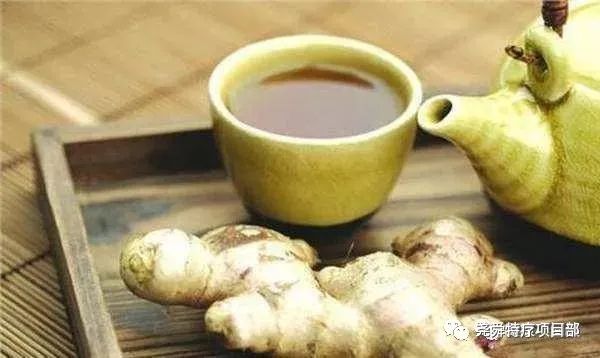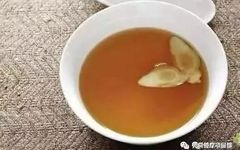Since the beginning of winter, the number of people suffering from wind-cold common colds has been increasing. We can see that more patients are visiting hospitals for colds. Can we treat wind-cold common colds on our own using Traditional Chinese Medicine (TCM)?
Common colds are external pathogenic diseases caused by external evils invading the skin and upper respiratory tract. They are usually classified into wind-cold colds, wind-heat colds, and deficiency colds. In cold seasons, especially, wind-cold colds are common, with symptoms including chills, absence of sweating, body aches, nasal congestion, clear nasal discharge, itchy throat, cough with clear phlegm, no thirst or preference for hot drinks, thin white tongue coating, and a floating tight pulse. The treatment principle for wind-cold colds is to release the exterior and disperse cold.

Wind evil combined with cold evil and insufficient righteous qi are important factors causing wind-cold colds, with the disease location in the upper jiao (lung defense). The pathogenesis involves external evils invading the lungs, leading to the loss of lung function in dispersing and descending. The pathway of cold evil causing disease is through the lung system and defense. Firstly, cold evil invades, obstructing the defensive yang, leading to a struggle between evil and righteous qi, resulting in symptoms such as fever, chills, and abnormal sweating; secondly, cold evil invades the lungs, causing nasal congestion and cough. Prolonged illness can damage righteous qi, or in the case of elderly or weak individuals with insufficient righteous qi, the exterior defense becomes unstable, making it easy to be invaded by cold evil, leading to recurrent wind-cold colds with prolonged illness.The location of wind-cold colds is in the lung defense, following the principle from the “Su Wen” that states, “If it is on the skin, it is released through sweating.” Therefore, the basic treatment principle for wind-cold colds is to release the exterior and promote lung defense. The treatment for wind-cold colds primarily involves using warm acrid herbs to release the exterior and disperse cold. The basic formula that can be chosen is Jing Fang Bai Du San (Jing Jie, Fang Feng, Qiang Huo, Chai Hu, Zi Su, Zhi Ke, Jie Geng, Zhi Gan Cao). If the exterior cold is severe, Ma Huang (Ephedra) and Gui Zhi (Cinnamon Twig) can be added; for mild wind-cold symptoms with sweating and a floating, relaxed pulse, it is advisable to release the wind and resolve the exterior, harmonizing the nutritive and defensive qi, using Gui Zhi Tang (Cinnamon Twig Decoction) with modifications; for severe nasal congestion and runny nose, Xinyihua (Magnolia Flower) and Cang Er Zi (Xanthium Fruit) can be added; for headache and neck stiffness, add Bai Zhi (Angelica Dahurica) and Ge Gen (Kudzu Root); for body aches, even severe pain, add Du Huo (Angelica Pubescens); for wind-cold combined with dampness causing headache and heaviness in limbs, add Cang Zhu (Atractylodes) and Gao Ben (Ligusticum); for internal phlegm-dampness causing chest tightness and thick white greasy tongue coating, add Jiang Ban Xia (Pinellia) and Chen Pi (Aged Tangerine Peel); for wind-cold transforming into heat or wind-cold binding the exterior with internal heat, add Huang Qin (Scutellaria) and Mulberry Root Bark (Sang Bai Pi). For alternating chills and fever, it is advisable to use Xiao Chai Hu Tang (Minor Bupleurum Decoction) in combination. If there are symptoms of qi deficiency such as shortness of breath and fatigue, add Dang Shen (Codonopsis) and Zhi Huang Qi (Astragalus); if there is yang deficiency with cold intolerance and cold limbs, add Xi Xin (Asarum) and Pao Fu Pian (Processed Aconite).

Four Things to Avoid When Having a Cold: 1. Intense Exercise Relying on exercise to sweat out a cold is not only ineffective but can cause greater harm, especially to the elderly, children, and those with weak constitutions. The body’s metabolism speeds up, and engaging in intense activities will increase internal heat, accelerate metabolism, and excessively consume energy, while the patient’s resistance significantly decreases, making it easier for cold viruses to invade. If they invade the myocardium, it can increase the burden on the heart and lungs, easily leading to acute myocarditis, heart failure, or even sudden cardiac death. 2. Not Eating When people catch a cold, they generally have a poor appetite and do not feel like eating. If they do not eat at this time, it will lead to insufficient energy supply, and the various symptoms of the cold will further increase energy consumption. Relying on hunger to treat a cold will only worsen the condition. 3. Taking Saunas Cold patients going to take saunas, with repeated hot and cold alternations, will further weaken the body’s resistance and exacerbate symptoms. 4. Drinking Alcohol Drinking alcohol during a cold will exacerbate vascular dilation and congestion, increasing respiratory secretions, further worsening the condition, which is not only unhelpful but harmful. Five Things to Do When Having a Cold:1. Bed Rest Resting helps preserve the energy needed for recovery and can also prevent complications such as bronchitis and pneumonia. Adequate rest and balanced nutrition are the best ways to treat a cold, and generally, a cold will recover in about a week. 2. Keep the Indoor Environment Clean and Ventilated Although one should not be exposed to wind when having a cold and fever, one should not keep doors and windows tightly closed either, as this will prevent air circulation and allow cold pathogens to proliferate. 3. Take Warm Baths Taking a warm steam bath can help relieve nasal congestion. Alternatively, boil a pot of water, pour it into a bowl, and cover your head with a large towel to inhale the steam until it cools. This can moisten a dry throat and relieve cough. 4. Gargle with Salt Water Gargling with salt water in the morning, noon, and evening, or whenever feeling uncomfortable, can relieve discomfort. Dissolve 1 teaspoon of salt in 1 cup of warm water for gargling. 5. Drink Plenty of Water Cold patients should replenish fluids, as fever causes significant fluid loss. You can drink distilled water or fruit and vegetable juices, which are excellent fluid supplements. Fruit and vegetable juices can also provide essential vitamins and minerals, especially vitamin C.

So, we previously mentioned using TCM to treat wind-cold colds. How does TCM treat this? Let’s take a look.

Ginger and Brown Sugar Water comes from the ancient medical book “Shouqin Yanglao Xinshu” (New Book on Longevity and Elder Care) Volume 1. The use of ginger soup to treat wind-cold colds has a long history. When selecting ginger, choose fresh ginger, avoiding blackened or wrinkled ginger. When preparing ginger soup, remember that the skin of ginger is rich in nutrients, so try not to peel it, or else the nutrients will be lost. Additionally, except for those with internal heat and red eyes or those with yin deficiency and excess fire, others suffering from wind-cold colds can choose to drink ginger soup.
1. Salt and Vinegar Ginger Soup
For external application. Prepare ginger soup and add vinegar and a small amount of salt. Dip a towel in the ginger soup and apply it to areas with muscle soreness caused by wind-cold colds, which can help relax muscles, invigorate blood circulation, and relieve tension and pain. Indications: Shoulder periarthritis, low back pain, air conditioning illness, and limb soreness caused by wind-cold colds.

2. Brown Sugar Ginger Soup
For internal use. Ginger and brown sugar water is suitable for those with wind-cold colds or stomach cold patients. Brown sugar can invigorate blood, and when cooked with ginger, it can promote blood circulation and treat colds.

3. Jujube Ginger Soup
For internal use. This is used to treat stomach diseases caused by cold. Ginger can stop vomiting, and jujube can nourish blood and tonify qi, making it suitable for treating stomach diseases caused by cold. This combination can also fully utilize ginger’s role in promoting blood circulation, helping to improve cold hands and feet in women, making it suitable for women to consume.

4. Green Tea Ginger Soup
For internal use. Suitable for consumption during the transition from summer to autumn, green tea ginger soup has the effects of clearing heat, soothing the mind, and benefiting qi, used for preventing and treating heatstroke. In daily life, brew green tea with shredded ginger for about ten minutes before consuming.

Yao Shun Pediatric Wind-Cold Common Cold Moxibustion
Symptoms: Chills and fever, severe chills, mild fever, white clear and thin phlegm, dry lips, cold limbs, hoarse voice, headache and body aches, pale tongue with thin white coating, floating pulse. Wind-cold common cold is caused by the invasion of wind-cold evil, leading to the loss of lung qi.Diagnosis:Wind-cold attacking the exteriorTreatment:Release the exterior and disperse coldAcupoint Application:Apply moxibustion to Shan Zhong (Ren 17), Da Zhui (Du 14), and for fever apply to Shen Que (Ren 8)Wind-cold common cold + cold cough:Apply moxibustion to Shan Zhong (Ren 17), Da Zhui (Du 14), and for cold cough apply to Shuang Fei Shu (BL 13)Wind-cold common cold + bronchitis:Apply moxibustion to Da Zhui (Du 14): for bronchitis apply to Shan Zhong (Ren 17), Shuang Fei Shu (BL 13), and for fever apply to Shen Que (Ren 8) (above 38°C)Wind-cold common cold + diarrhea:Apply moxibustion to Da Zhui (Du 14), for cold diarrhea apply to Shen Que (Ren 8), and Zhi Xie (ST 25)


